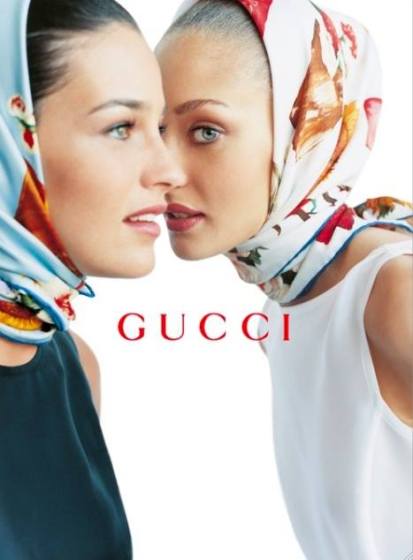Guest Blogger: Mona Aboudheir

I felt absolutely nothing when H & M debuted a Fall 2015 ad featuring their very first hijabi model.
Western society has a very strange obsession with hair, specifically that of women. The war on hair is terrible. The level of censorship and control employed on the portrayal of women and their hair is astonishing. The epidemic is so extreme that commercials advertising hair removal products cannot properly display their product at work. A man being shown shaving his beard for a razor ad: of course, no problem. A woman however?
Now, let us set the stage : Britney Spears is a household name for good reason, one of the most iconic pop artists of her time. Even for those who are not avid listeners of mainstream music, cannot deny the fact that you can probably finish the phrase “hit me baby-“. However, such international recognition comes a price and Spears was no exception. She was relentlessly watched, scrutinized, stalked, controlled, and criticized. People thrived off telling her what to do and what not to do. What to wear, and how to wear it. How her makeup should look… her hair. Hands constantly couching her so, later, the eyes of millions may. Eventually, the stress of stardom took a toll on her mental health and, ultimately, Spears had one of the most publicly documented breakdowns of celebrity history: she shaved her hair. Her golden trademark. For that matter, Spears is not the only female celebrity to go through this struggle, Kirsten Stewart had faced a similar predicament.

Let us talk about Lemonade, with a capital L. Late April 2016, Beyoncé released her second visual album and, while the album’s themes pertain specifically to the Black community, Beyoncé makes a point to repeatedly address the struggle of natural hair. The iconic quotable line “Becky with the good hair” stares the issue right in the eye. Throughout the visual album Beyoncé and her Ladies are seen rocking natural hair as Beyoncé speaks about her struggle of trying to conform to the ideals of “good hair.”
The Reason why I do not see any particular breakthrough of featuring a hijabi model is because in the winter of 2016 the luxury fashion house Dolce & Gabbana debuted a Winter 2016 abaya line. As if the only thing Muslim woman were missing is a ridiculously expensive black cloth branded by a Western logo.

Likewise, the 2016 NYFW feature of all hijabi models comes down to the same essence as the D&G abaya line: we like it when you look rich and modelesque. This is the pinnacle of cultural appropriation: your customary dress will only be accepted if it is delivered by us. You may wear it only if you can easily remove it and assimilate back into the mainstream style. Western views are temporary and superficial. The admittance of an against-the-grain model to the Scene sends only one message: I got here by bending over backwards and so must you. The token variation of the norm is not an accomplishment.

Moreover, the timely Parisian style of a silk carré further enforces the notion that whenever the hijab (or hijabi like appearances) is used in the fashion scene, Muslim women lose a battle. The entity of fashion and hijab are not easily agreeable. Looking put together while wearing hijab can, of course, coincide. However, the Western view of fashion has no place in tainting the hijab. This is a process that has already begun and is increasingly evident. Young hijabi women are finding themselves under pressure to follow the latest fashion trends in the hijabi world and, ultimately, regress to the mean of a certain “look”, basically, everything the hijab stands against. You may hit the town for brunch with lace gloves and your scarf tied under your chin then, later, remove it for dinner. Muslim women do not have such societal forgiveness; for their dress to be seen as solely Fashion forward. A Muslim woman has to live with that silk scarf tied under her chin day in and day out. Yet for society it is not seen as much as a statement of dress but rather a statement placed on the female.

I do not see the fetishisation of the hijab as any sort of victory. The continuous over exposure of hijab and hijabi fashion in the Western fashion scene proves to only further objectively Muslim women. The very core of haut fashion is the expression of creativity and art through the medium of textiles. Outrageous and dysfunctional clothing are fine because they are the artistic vison of the designer. And what is the sole purpose of art if only just to please, for that is the definition of art; something that serves no apparent function besides that of pleasure.

c/o files.kavyar.com
Your Hijab is not scrutinized because it supposedly symbolizes oppression. Your hijab is condemned because it provides immunity. It is covering a part of you that can so easily fall under the control of someone else’s ideals. Your reclamation of this tool causes you to become an uncontrolled variable. And your weapon – the hijab – is unattested; a concept – staple and constant – that is intangible. You can no longer be criticized for having hair that does not look like Becky’s because your hair is under your own ownership. It has never been about the “liberation” of The Oppressed Women as much as it is about the fear of your uncontrollability.

I still do not know how I feel about hijab being used in Western fashion. Perhaps I need more time mulling the idea over. Perhaps, in time, it will serve the Muslim Ummah more than the money spending Ummah. At least for now if I am to feel anything, it is nothing at all.
